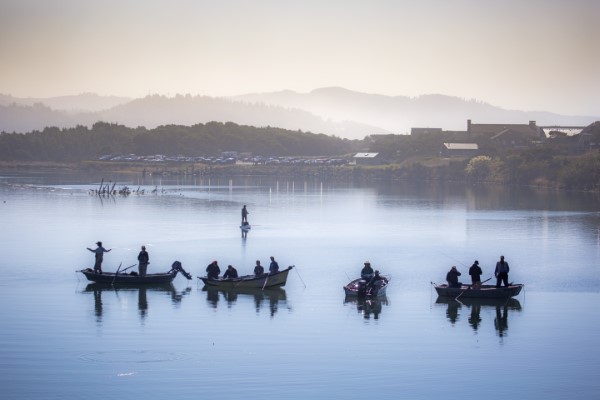A look into the nation’s outdoor recreation industry reveals a sector experiencing robust growth as nationwide participation reaches new heights.
According to recent data released by the Outdoor Satellite Account and the U.S. Department of Commerce’s Bureau of Economic Analysis (BEA), the outdoor recreation economy produced $1.1 trillion in economic output in 2022. This reflects an added value of $564 billion, or 2.2% of U.S. GDP.
In 2023, participation hit a new record with a reported 175.8 million Americans getting active. The Outdoor Industry Association’s (OIA) 2024 Outdoor Participation Trends Report shows that record accounts for 57.3% of Americans aged six or older.
With the country on the move now more than ever, various U.S. states are unveiling new projects and targeted funding to drive new employment opportunities while also promoting innovation.
OREGON
OIA’s 2024 Outdoor Retail Sales Trends Report showed that retail sales saw a 3.2% decline last year compared to 2022 data. While apparel, footwear and equipment sales slumped, the report states that accessories sales were on the rise.
Nike, Adidas and Columbia Sportswear are among the over 700 outdoor gear and apparel businesses operating in the state, supporting more than 25,500 jobs as of 2021.
“There has been relatively fast employment growth in this sector over the past 10 years, up 12.3%,” says Business Oregon Innovation and Entrepreneurship Manager Mark Brady. “Which stands out compared to the national trend where employment declined by 9.1% from 2013 and 2023. This means Oregon has seen its market share increase dramatically over the past decade. As of 2023, the concentration of employment in outdoor gear and apparel, excluding HQs, was 20% higher than the national average.”
Not interested in allowing the state’s momentum to slow, Business Oregon aims to promote fresh innovation with the Outdoor Gear and Apparel Matching Grant Program. Announced in July 2024, the state will provide $500,000 in matching grant funding to non-profit organizations and business accelerators to help emerging companies enter the industry.
Organizations or accelerators that apply for the grant will be required to provide at least a 10% cash match of the cost associated to the proposed project. If contributing more than 10%, the match can include an “in-kind” match which accounts for the value of services, time and equipment used for a project and not covered by the program.
This program looks to the expertise of Oregon residents who drive innovation through lived experience, presenting an opportunity to diversify Oregon’s industry ecosystem. Excluding large corporate employers that operate in the state, the average number of employees for an outdoor gear and apparel company is around 13. New businesses create new employment opportunities outside of legacy companies and spread into new regions of the state.
“Rural areas in Oregon are well positioned to advance the industry and this program seeks to support rural businesses and organizations as much as possible,” says Brady. “We will be thoroughly considering every application and recognize that since this program requires a membership organization or accelerator to run it, our applicants may be more diversely scattered throughout Oregon, including the metro areas. But the goal of this program is to support emerging and rural businesses as much as possible.”
COLORADO
In 2023 alone, Colorado pulled in over 93.3 million visitors. Capital city Denver saw 37.4 million tourists, according to a study conducted by Longwoods International. While Colorado’s most popular destinations like Aspen, Boulder and Vail tend to draw a majority of visitors, state leadership is intent on supporting outdoor recreation industry growth across all of its communities.
The Colorado State Outdoor Recreation Grant (COSORG) program was unveiled in 2022 by the Colorado Outdoor Recreation Industry Office (OREC) and the Colorado Office of Economic Development and International Trade (OEDIT). COSORG was created to provide financial assistance to support a variety of projects specific to their locations. This activity includes workforce development programs, creating new roles, marketing and outreach, accessible youth programs, creating industry partnerships and more.
“Over the last year, the OREC team has met with Coloradans across the state and had the opportunity to see the impact of these grants firsthand,” said OREC Director Conor Hall. “The recipients are increasing access to the outdoors, bolstering destination stewardship and conservation, creating jobs and a diversified workforce to fill them, boosting their local economies and proving every day that a thriving outdoor recreation industry is good for the whole state.”
The latest round of the program provided over $1.1 million to 15 new recipients. Awardees received grants ranging from $20,000 to $200,000, tackling a number of fresh initiatives. The city of Pueblo will use its $100,000 grant to create a municipal Office of Outdoor Recreation as a central location for resources and advocacy for industry businesses and residents.
Three hours northwest in Gunnison, Western Colorado University is putting its $100,000 toward construction of an outdoor industry lab, providing lab space and equipment to promote entrepreneurism and workforce development.
As of 2024, the state has distributed over $3.7 million in COSORG funding toward 50 projects in 27 counties, creating nearly 300 direct new jobs.
NEVADA
Outdoor Recreation in Nevada currently employs over 54,000 residents. Increased demand for outdoor industry professionals throughout Nevada led to a new partnership between the Nevada Division of Outdoor Recreation and the University of Nevada, Reno in July 2024.
The budding collaboration is focused on the development of a new specialization and minor program for students. As part of the university’s College of Agriculture, Biotechnology and Natural Resources Bachelor of Science in Environmental Science program, a Sustainable Outdoor Recreation Management specialization will be implemented in the fall of 2024.
“We want graduates to be able to apply environmental science concepts in business decisions to help sustain outdoor recreation opportunities and our natural environments,” said University of Nevada, Reno Associate Dean of Academic Affairs Claus Tittiger. “This specialization will provide students with a much broader spectrum needed to help make both profitable and environmentally responsible decisions in careers in the outdoor recreation sector.”
The development of the Outdoor Adventure and Leadership (ODAL) minor will be administered through the university’s Kinesiology Department within the School of Public Health. This pathway will create a number of new courses to teach leadership and communication skills. The program takes a place-based approach to teaching leadership skills to students in locations such as the Sierra Nevada, Great Basin and Lake Tahoe regions.
“While the ODAL program focuses on developing outdoor competency in activities like backpacking, rock climbing, backcountry skiing and riding, and whitewater rafting, the transferable skills like leadership, communication, risk assessment and management, teamwork, tolerance for adversity and uncertainty are relevant lessons in many personal and professional settings, making this a valuable minor for any student,” said University of Nevada, Reno Teaching Associate Professor and ODAL Minor Director Andy Rost.

